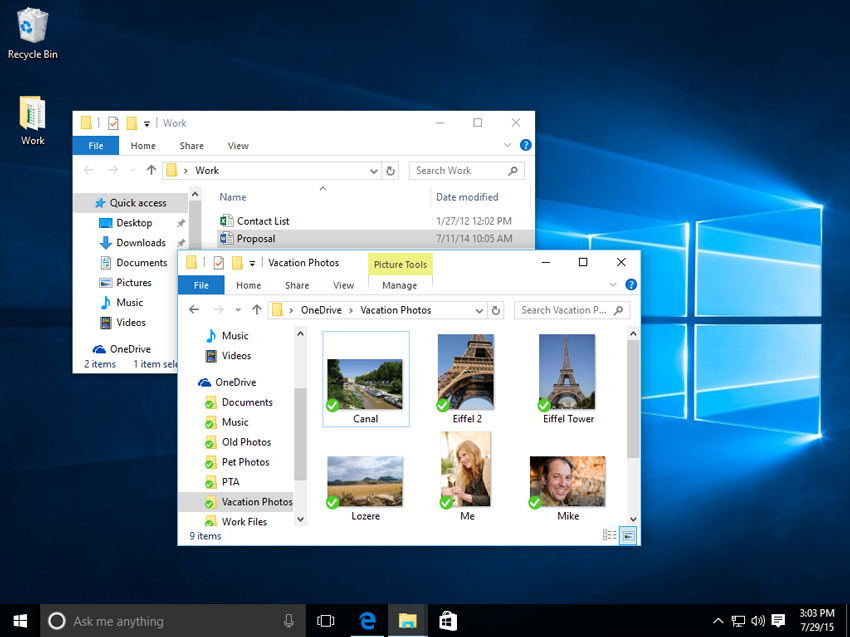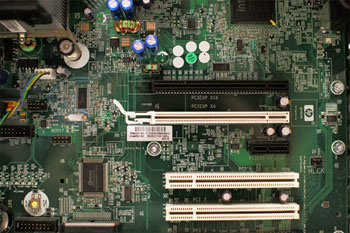BASICS CONCEPTS OF COMPUTERS.
what is devices?
Any machine or component that attaches to a computer. Examples of devices include disk drives, printers, mice, and modems. These particular devices fall into the category of peripheral devicesbecause they are separate from the main computer.
Most devices, whether peripheral or not, require a program called adevice driver that acts as a translator, converting generalcommands from an application into specific commands that the device understands.
WHAT IS COMPUTER?
A computer is an electronic device that manipulates information, or data. It has the ability to store, retrieve, and process data. You may already know that you can use a computer to type documents, send email, play games, and browse the Web. You can also use it to edit or create spreadsheets, presentations, and even videos.
HARDWARE VS SOFTWARE.
Before we talk about different types of computers, let's talk about two things all computers have in common: hardware and software.
Hardware is any part of your computer that has a physical structure, such as the keyboard or mouse. It also includes all of the computer's internal parts, which you can see in the image below.
Software is any set of instructions that tells the hardware what to do andhow to do it. Examples of software include web browsers, games, and word processors. Below, you can see an image of Microsoft PowerPoint, which is used to create presentations.
what are the different type of computers?
When most people hear the word computer, they think of a personal computer such as a desktop or laptop. However, computers come in many shapes and sizes, and they perform many different functions in our daily lives. When you withdraw cash from an ATM, scan groceries at the store, or use a calculator, you're using a type of computer.
in the first image we saw the desktop computer:
here we have laptops computers:
an the last one we have:
TABLET COMPUTERS
servers
A server is a computer that serves up information to other computers on a network. For example, whenever you use the Internet, you're looking at something that's stored on a server. Many businesses also use local file servers to store and share files internally.
SO THIS IS LIKE AN EXTRA:
OTHERS YPES OF COMPUTERS ARE:
- CELLPHONES
- WEREABLES
- SMARTHPHONES
- GAME CONSOLES
- TVS.
OPERATING SYSTEMS.
this is another anex of the computers.
An operating system is the most important software that runs on a computer. It manages the computer's memory and processes, as well as all of its software andhardware. It also allows you to communicate with the computer without knowing how to speak the computer's language. Without an operating system, a computer is useless.
The operating system's job
Your computer's operating system (OS) manages all of the software and hardwareon the computer. Most of the time, there are several different computer programs running at the same time, and they all need to access your computer's central processing unit (CPU), memory, and storage. The operating system coordinates all of this to make sure each program gets what it needs.
Types of operating systems
Operating systems usually come pre-loaded on any computer you buy. Most people use the operating system that comes with their computer, but it's possible to upgrade or even change operating systems. The three most common operating systems for personal computers are Microsoft Windows, Mac OS X, and Linux.
Modern operating systems use a graphical user interface, or GUI (pronouncedgooey). A GUI lets you use your mouse to click icons, buttons, and menus, and everything is clearly displayed on the screen using a combination of graphics and text.

Microsoft Windows
Microsoft created the Windows operating system in the mid-1980s. Over the years, there have been many different versions of Windows, but the most recent ones areWindows 10 (released in 2015), Windows 8 (2012), Windows 7 (2009), and Windows Vista (2007). Windows comes pre-loaded on most new PCs, which helps to make it the most popular operating system in the world.
Mac OS X
According to StatCounter Global Stats, Mac OS X users account for less than 10% of global operating systems—much lower than the percentage of Windows users (more than 80%). One reason for this is that Apple computers tend to be more expensive. However, many people do prefer the look and feel of Mac OS X over Windows.
Linux
According to StatCounter Global Stats, Linux users account for less than 2% of global operating systems. However, most servers run Linux because it's relatively easy to customize.
SO NOW WE SAW THE OPERATING SYSTEM FOR MOBILE DEVICES.
The operating systems we've been talking about so far were designed to run ondesktop and laptop computers. Mobile devices such as phones, tablet computers, and MP3 players are different from desktop and laptop computers, so they run operating systems that are designed specifically for mobile devices. Examples of mobile operating systems include Apple iOS and Google Android. In the screenshot below, you can see iOS running on an iPad.
Operating systems for mobile devices generally aren't as fully featured as those made for desktop and laptop computers, and they aren't able to run all of the same software. However, you can still do a lot of things with them, like watch movies, browse the Web, manage your calendar, and play games.
STORAGE DEVICES.
A storage device is any computing hardware that is used for storing, porting and extracting data files and objects. It can hold and store information both temporarily and permanently, and can be internal or external to a computer, server or any similar computing device.
A storage device may also be known as a storage medium or storage media.
EXAMPLES OF STORAGE DEVICES ARE:

QUEJAS U/O COMENTARIOS HÁGANLO SABER
ResponderBorrar